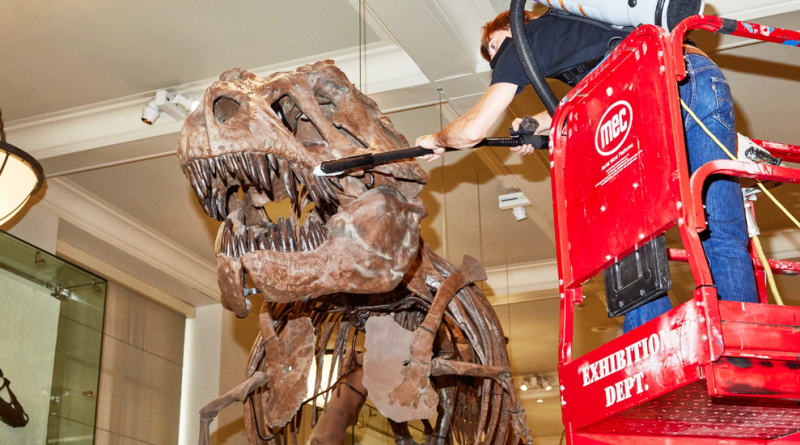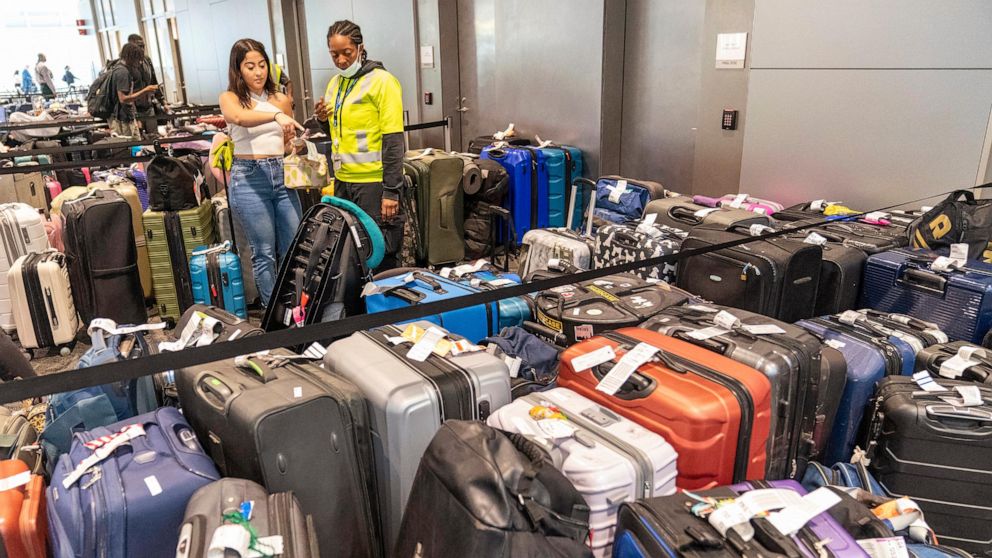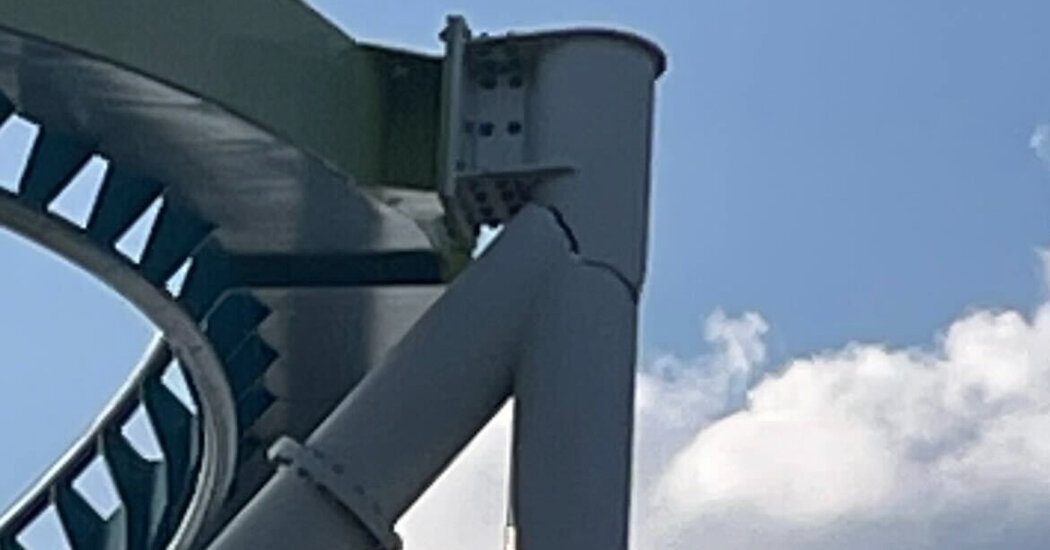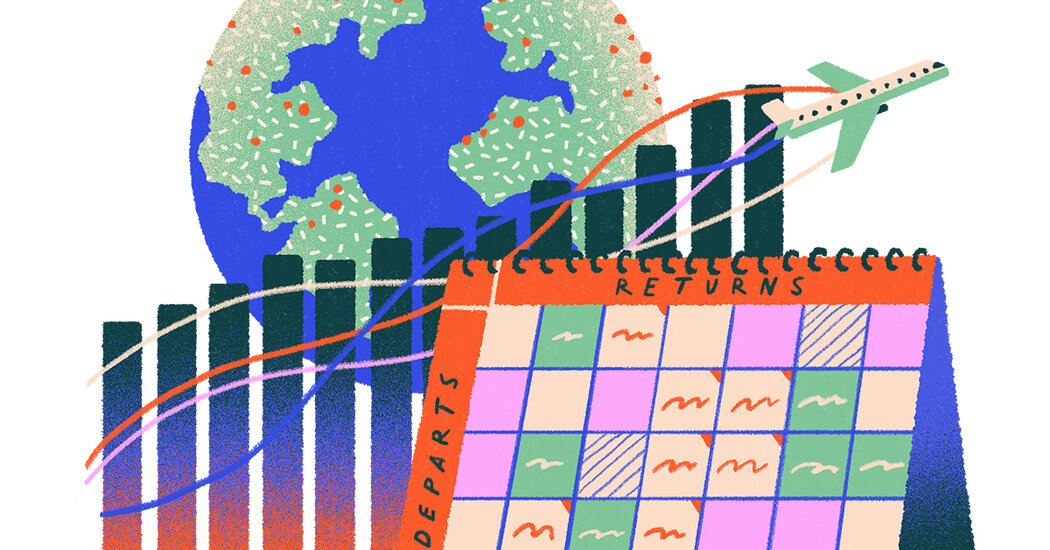Natural History Museum Brushes Up for a Reopening
Don’t expect to put your arm around Teddy Roosevelt for a selfie. Or poke a finger in a moon crater, or scrape the mighty jaw of a T. rex.
When the American Museum of Natural History reopens on Sept. 9, it will — like all cultural institutions that have been retrofitted for the Covid era — look and feel a little different.
The sculpture of Roosevelt, seated on a bench just inside a lower entryway and formerly a popular spot for photos, has been cordoned off with stanchions. Ditto the model of the moon in the Rose Center for Earth and Space, where once you could stand and learn your lunar weight.
Touch screens are off, and so are the Imax films at the Hayden Planetarium. The hall of meteorites will stay unexplored, and the small theater tucked underneath the long, long tail of the Titanosaur will remain empty. Under the behemoth’s outstretched neck last week, a museum staff member was testing an about-to-be deployed army of automatic hand sanitizer machines. Their robotic blurp is now part of the soundtrack to many exhibition halls.
The reimagining and re-engineering of the museum experience is meant to be noticeable, and assuring, said Ellen V. Futter, the museum’s president. “We’re very keen for people not only to be safe but for people to feel safe,” she said, especially as they re-enter large public spaces for possibly the first time in many months.
But for all the changes — which include the museum’s hours, ticketing, prices and live programming (none to speak of) — much will remain the same. The blue whale is still suspended there. (Where else could hold her?) The dioramas are just as frozen, if now a little less dusty. The museum has used the longest closure in its 150-year history as an opportunity to do some deep cleaning.
One recent weekday, a worker was perched atop a lift, swabbing a far back corner of the tippity-top of a prosauropod’s glass case. The floors are ultrapolished. So are the T. rex’s teeth.
Even the interactive objects that are now off-limits have been protectively spiffed up, with an eye toward the moment when they can be accessible again. Michael Meister, the director of exhibition design, was rolling through the dinosaur rooms with a cart laden with custom-made plexiglass covers, popping them on. “They’re all made to be flexible — to come right off,” he said. “The goal isn’t to hide anything or remove anything,” because the expectation, the hope, is that these adjustments will be temporary, he said.
On the museum’s front steps, the statue of Roosevelt on horseback, flanked by an African man and a Native American man — for years the object of criticism as a symbol of racism and colonialism — is still there, though the museum and the city agreed in June that it should be removed. No plans have yet solidified, but the exhibition “Addressing the Statue” continues, now with new signage to help control crowds in a narrow hallway there.
Across the museum, there are new air filters, one-way traffic patterns and orange stickers denoting where to stand in each corner of an elevator, to maintain social distancing. (Only two people at a time, the museum requests.)
That is a tall order when the Central Park West building normally has about 5 million visitors a year, nearly half a million of them schoolchildren. Now, capacity is capped at 25 percent, but a spokesman for the museum said they plan to go below that initially, for an even more intimate experience — allowing hundreds, not thousands, of visitors in per hour, up to about 3,500 a day. Early sales for timed tickets have been strong, he said. (The museum reopens to members on Sept. 2.)
The museum has operated through pandemics and serious outbreaks before. In 1908, it opened an exhibition about tuberculosis, the bacteria-borne lung disease that was the city’s leading killer at the turn of the 20th century. It was a proto-blockbuster of a show, with lines around the block; as many as 10,000 people saw it on a single day, according to the museum.
Its success led to the creation of a public health division at the museum, whose curator had the foresight to begin collecting specimens of bacteria and other microbes. That collection formed the basis of a national repository that still exists today, as a key resource for researchers.
Early in this pandemic, the museum created online resources to help the public understand the coronavirus and the search for a cure; more programming is planned. Its scientists are also working on related research. Sharing facts and evidence-based science “is very much in our sweet spot,” Ms. Futter said. “Science and education have never been more important.”
The Coronavirus Outbreak ›
Frequently Asked Questions
Updated September 1, 2020
-
Why is it safer to spend time together outside?
- Outdoor gatherings lower risk because wind disperses viral droplets, and sunlight can kill some of the virus. Open spaces prevent the virus from building up in concentrated amounts and being inhaled, which can happen when infected people exhale in a confined space for long stretches of time, said Dr. Julian W. Tang, a virologist at the University of Leicester.
-
What are the symptoms of coronavirus?
- In the beginning, the coronavirus seemed like it was primarily a respiratory illness — many patients had fever and chills, were weak and tired, and coughed a lot, though some people don’t show many symptoms at all. Those who seemed sickest had pneumonia or acute respiratory distress syndrome and received supplemental oxygen. By now, doctors have identified many more symptoms and syndromes. In April, the C.D.C. added to the list of early signs sore throat, fever, chills and muscle aches. Gastrointestinal upset, such as diarrhea and nausea, has also been observed. Another telltale sign of infection may be a sudden, profound diminution of one’s sense of smell and taste. Teenagers and young adults in some cases have developed painful red and purple lesions on their fingers and toes — nicknamed “Covid toe” — but few other serious symptoms.
-
Why does standing six feet away from others help?
- The coronavirus spreads primarily through droplets from your mouth and nose, especially when you cough or sneeze. The C.D.C., one of the organizations using that measure, bases its recommendation of six feet on the idea that most large droplets that people expel when they cough or sneeze will fall to the ground within six feet. But six feet has never been a magic number that guarantees complete protection. Sneezes, for instance, can launch droplets a lot farther than six feet, according to a recent study. It’s a rule of thumb: You should be safest standing six feet apart outside, especially when it’s windy. But keep a mask on at all times, even when you think you’re far enough apart.
-
I have antibodies. Am I now immune?
- As of right now, that seems likely, for at least several months. There have been frightening accounts of people suffering what seems to be a second bout of Covid-19. But experts say these patients may have a drawn-out course of infection, with the virus taking a slow toll weeks to months after initial exposure. People infected with the coronavirus typically produce immune molecules called antibodies, which are protective proteins made in response to an infection. These antibodies may last in the body only two to three months, which may seem worrisome, but that’s perfectly normal after an acute infection subsides, said Dr. Michael Mina, an immunologist at Harvard University. It may be possible to get the coronavirus again, but it’s highly unlikely that it would be possible in a short window of time from initial infection or make people sicker the second time.
-
What are my rights if I am worried about going back to work?
Fun is good too. The museum is re-upping “The Nature of Color,” an immersive exhibition which had just opened when the pandemic shutdown began on March 13.
To re-enter the grand halls and ornate spaces of institutions like the Natural History or the Met, after months in which our world shrank so much — to too-small apartments and overly familiar neighborhoods, the numbing roteness of domestic routine — is to quickly rediscover awe. Art museums give us beauty and challenge our thinking. Natural history museums, which showcase the evolution of our world and its multifarious cultures over eons, offer perspective.
Even for Ms. Futter, who began visiting the museum as a girl of 5 or younger, it was emotional to return. “Going in and out of its doors every single day and night, and not having done so for months, was difficult and painful,” she said. “Coming back was moving and actually very happy.”
She expects that many museumgoers may be flooded with emotion too — with nostalgia and a sense of community, relief and joy at the return, however vigilant, to a vibrant remembered life.
“The visit itself is transporting,” she said. “We let you visit everywhere, seven continents and outer space, on Central Park West and 79th Street.”
“Equally true is the enormous reassurance that there are some things that are constant — and we are one of them.”
American Museum of Natural History
The museum reopens on Sept. 9 (doors open to members on Sept. 2). Advanced purchase of timed tickets required. 212-769-5100, amnh.org.
Sahred From Source link Travel



